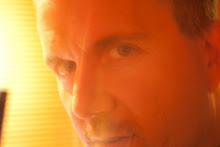
018 - I generally do my own work. By that I mean I don’t finish (online) other editor’s edits (offline). I made a conscious decision years ago not to focus on the finish but instead the process of telling the story. And so I learned to make damn sure that my projects were meticulously organized because, at the time, I had to hand them off to an online editor who was charged with assembling them. Since online was at ten times my rates for offline it was critical that my edit decision lists (EDLs) were as clear and easy to understand as possible. Eventually finishing/online was thrust upon me by a) a marketplace that could not support separate facilities and b) technology that could efficiently combine offline & online in one place.
In a rare alignment of the planets the facility where I worked and which had hired me to do offline editing, was given a contract to finish a television series for air. My employer felt that my efforts could be diverted to strictly online this series. But they didn’t count on the fact that the editor who was cutting it was as organized as kindergarten fire drill. So when his list called for tapes whose names were unclear everything bogged down. Unclear is too kind. A complete clusterf**k is a more apt description. (Hey, it’s not profanity. It’s a technical film and video term. Look it up.)
Duplicate tape numbers, inconsistent nomenclature, and mislabelling all combined with missing tapes (!) made for quite a puzzle. Sometimes I’d spend hours re-digitizing only to see that there were tapes that were wrong but because it had the same time code the result was very a dada-esque picture and sound edit. And because it was a series I couldn’t permanently unravel the tape naming with the editor because several episodes were already in the queue behind the one I was doing (renaming the tapes at that stage would only add fuel to the fire). It was a nightmare unmatchable by Freddie Krueger.
My favourite moment was when the system asked me to insert tape “386”. Nothing else- just “386”. There wasn’t anything even resembling a 386. Not a 385 or 387. The highest number was #24 out of 50 tapes (don’t ask). It was late and the editor was unavailable and I was just about to throw something heavy when my focus shifted I noticed one single gray tape amongst the few dozen black tapes. It happened to be Maxell stock whose only identifying label was the product number “386”. Grrrrrrrrrrr.
When I completed that nightmare days later I loaded the EDL for episode two and immediately found a sea of clips in the timeline all called “untitled” because he couldn’t be bothered to label them -- I cracked. I burst into the hall, grabbed my brand new assistant by the ear (figuratively), dragged him into the suite, pointed to each and everything this editor had done wrong and bellowed, “You see all this? You SEE it?!? If you EVER do anything like this…EVER… I will hunt you down and kill you. I don’t care if you’re not even working for me. You - dead. Painfully. Got it?”
He got it.
This week’s blog could rest on the importance of proper and consistent labeling or giving everything a clear title. All true. But I’m going to add to it a very helpful tip. Whenever you label a tape, graphic, audio file, or whatever you digitize or import give the first 10 characters or less the same unique name – a name only related to the specific project. For instance if you’re doing a documentary about roses you might label your first tape “Rose 001”. (Note the three digits in the tape number to allow for 999 possible tapes which will sort in proper numeric order). Audio mix or graphic files you’ve been handed might be labelled “June 18th mix” or “opening titles”. So add the name “Rose” to the front of it before you import it. Now, when you’re wrestling with hundreds of tapes and dozens of files, you’re safely organized.
But something el
 se very helpful happens. Notice when you’re organizing media on your hard drives the first 10 characters of the MXF files relate to the tape name? If you call all your tapes “footage” or “tape” you’re begging for confusion later. But your unique ”Rose” tapes will stand out against your other project’s “Daisy” tape names, for example. Even if you do what our shop does - which is to barcode each and every tape (yes, we rock) - you should still put a project name in front. And this labelling ripples to the media file names which in turn will allow you to cull, move or delete media with the assurance that you’re playing with the right stuff.
se very helpful happens. Notice when you’re organizing media on your hard drives the first 10 characters of the MXF files relate to the tape name? If you call all your tapes “footage” or “tape” you’re begging for confusion later. But your unique ”Rose” tapes will stand out against your other project’s “Daisy” tape names, for example. Even if you do what our shop does - which is to barcode each and every tape (yes, we rock) - you should still put a project name in front. And this labelling ripples to the media file names which in turn will allow you to cull, move or delete media with the assurance that you’re playing with the right stuff.After all, a rose, by some other name, would be hard to find.


